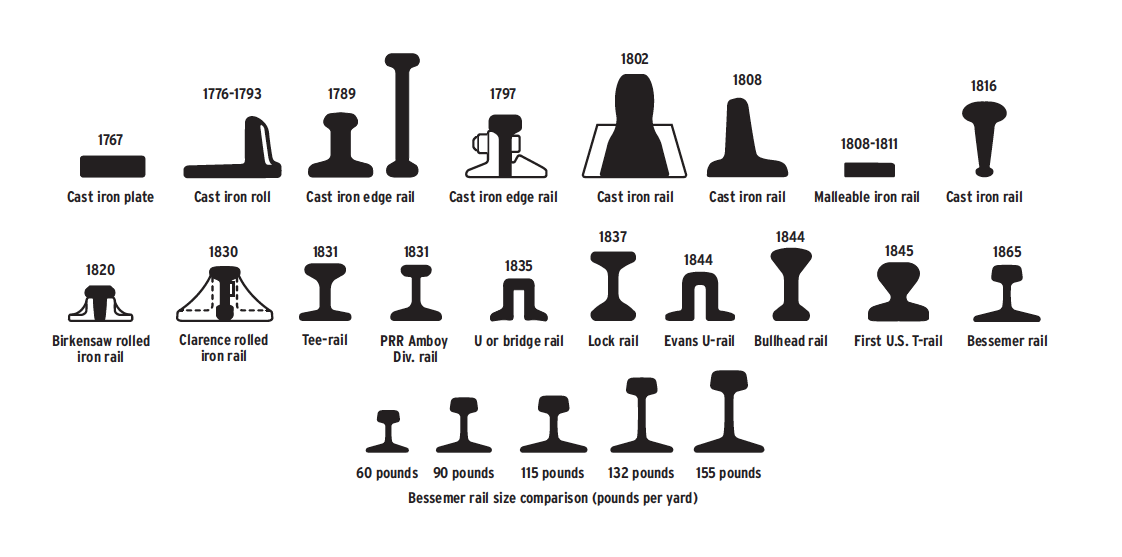A: The basic shape, or profile, of rails that we see today: chucky head, thin web, and wide base, has its roots railroading as early as 1789, according to an illustration Trains printed in the May 2013 issue.
Rails are the basic requirement for a “rail-road” and have appeared in many different shapes based on how railroads, track designers, and rail manufacturers fastened rail to the ground, kept it in gauge, or the weight of trains passing over rail heads.
There’s no right or wrong way to develop a rail, but the most modern research into metallurgy looks to maximize rail life, prevent derailments, reduce wear to wheels, and move trains as efficiently as possible — and adjusts sizes and shapes accordingly. To that end, most modern rail in North America resembles the Bessemer rail from the 2013 illustration.
In the past 30 years, more railroads and contractors are shaping rail heads with special grinding equipment after laying new rail to literally shape the rail to boost life an efficiency on a location-by-location basis taking into account degrees of curvature and super-elevation in the track, speed, use (freight, passenger, or mixed), among other variables.
Though common in illustrations, including in Trains, modern rail is rarely flat-toped and typically looks more like the round top of a loaf of bread. — Steve Sweeney














